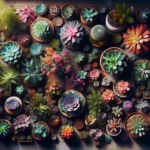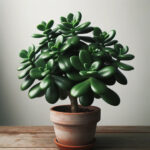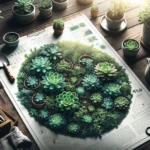Introduction to Crassula Identification
Embark on a botanical journey as we delve into the captivating world of the Crassula genus, a cornerstone of succulent collections cherished by enthusiasts across the globe. Notable for their easy-care routines and sculptural aesthetics, Crassulas present a tapestry of shapes, sizes, and textures that enthrall the senses and inspire the green thumbs in us all.
Recognizing these succulent gems presents both a challenge and an opportunity for plant lovers. Differentiating between the plump jade leaves of Crassula ovata and the tightly stacked beads of Crassula rupestris is just the beginning of this rewarding quest. Each Crassula carries its own signature, a clue whispering the secrets of its identity, be it through a subtle variegation, a unique bloom, or our sorrow-felt companion, the peculiar, yet stunning “Gollum” Jade.
Imagine the thrill of unearthing a rare, mesmerizing cultivar at your local nursery. The elation of properly identifying your find, and the anticipation of nurturing it to its fullest potential. This is what drives the passion of Crassula identification—a world of discovery where every leaf tells a story.
Check out this insightful video for a visual guide to Crassula identification and add another layer of depth to your succulent wisdom:
For those who wish to delve deeper into the captivating intricacies of these remarkable plants, further reading on Crassula alba, for instance, reveals compelling insights and tips that resonate with both novices and seasoned collectors alike.
The Crassula Family: A Diverse Group of Succulents
Welcome to the captivating world of Crassula, a genus where every member packs a punch with its unique flair. Imagine a family reunion where each relative showcases a distinct personality, and that’s the Crassula family for you. From the plump leaves of the Jade Plant (Crassula ovata), exuding a lush green charm, to the out-of-this-world look of the Crassula muscosa with its tightly woven, serpentine foliage – there’s a mesmerizing variety waiting to steal the spotlight in your garden or living room.
What makes Crassulas stand out in the crowded succulent scene? It’s their incredible adaptability and the sheer range of forms, textures, and sizes they present. Crassula care is a breeze, thanks to their forgiving nature. Picture the Crassula arborescens, also known as the Silver Dollar plant, flaunting its silvery round leaves – it’s not only a sight to behold but a testament to the Crassula family’s resilience and low-maintenance appeal.
Identifying Crassula species can be akin to solving a delightful puzzle. Each variant may carry a unique feature, like a floral fingerprint. The flat, paddle-like leaves of the Crassula platyphylla, or the intricate red tips of the Crassula capitella ‘Campfire’, serve as clues unraveling their identity. There’s a sense of discovery, a botanical treasure hunt, as you learn to distinguish each type by sight and trait. The thrill of identifying your very own Crassula is much like recognizing an old friend in a sea of faces.
Integrating Crassulas into your life doesn’t just boost your green thumb status – it’s about embracing diversity and the beauty of nature’s artwork. Whether you’re a seasoned collector or a novice enthusiast, there’s a perfect Crassula waiting for you. Explore our extensive guide on the enchanting Crassula arborescens and elevate your plant game to a whole new level.
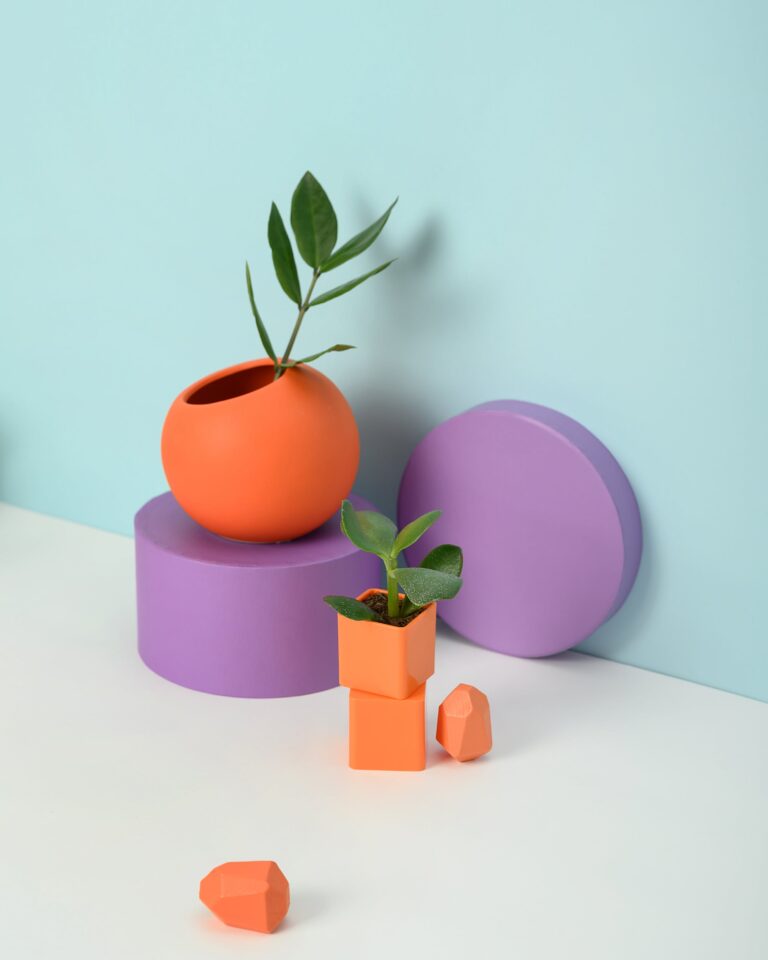
So, let your curiosity lead the way and dive into the world of Crassula. The journey of Crassula identification is not merely about putting a name to a succulent; it’s about uncovering the secrets of these resilient, alluring, and sometimes whimsical plants. Each Crassula holds a story, a natural history etched into their succulent leaves and stems, waiting for you to read it.
Physical Characteristics of Common Crassula Species
Embarking on a journey to identify a Crassula is like diving into a treasure hunt where each specimen shimmers with its own exclusive set of clues. The Crassula family, a sanctum of succulents, flaunts a wide array of physical features that entrench them as gems within the plant kingdom. Let’s decipher the subtleties that make each Crassula plant a haven of identification.
Begin with the leaves; the robust greenery that often serves as a robust tapestry, varying from the powdery blue-green rosettes of Crassula arborescens to the jade-hued paddles of Crassula ovata. These leaves are not just a palette of colors but a spectrum of textures – some plump and glossy, others matte and delicately keeled. When identifying a Crassula, one must become a detective, noting whether the leaves are stacked neatly alongside each stem or if they spiral with wild abandon.
Leafy Insights
A telltale trait of many Crassulas, such as the playful Crassula muscosa, is their artful arrangement that can resemble a tightly woven lattice. Against the illustrious silhouette of the ‘Watch Chain’ Crassula muscosa, one finds themselves marveling at the precision of nature’s architecture.
Blossoming Beauties
And then there are the flowers, those ephemeral bursts of color that crown each Crassula with splendor. Consider the dainty pink blooms of Crassula ovata, modest yet charming, or the resplendent white flowers of Crassula alba, adorning their hosts like a halo of stars. Each floral arrangement whispers secrets of its species’ identity, with flower numbers, petals, and formations offering cryptic inklings to the trained eye.
Can’t picture the stages of Crassula blossoms? Feast your eyes on one of nature’s small wonders as we uncover the blooming spectacle of a Crassula through the seasons:
Stems and Growth Patterns
Exploring further, the stems speak volumes – from the thickset trunk of the Crassula ovata, robust and tree-like, many a tale of resilience, to the wiry, contorted stems of a Crassula pellucida subsp. marginata, a gesture toward the more capricious side of growth. These diverse growth patterns are puzzles, waiting for observant souls to piece them together.
Harness the minimalist charm of the humble stem into your everyday life, whether it’s replicating the robust poise of the classic Jade Plant in your living room or imitating the intricate, twisted forms of the Crassula marnieriana as a desk companion.
Ultimately, to truly appreciate the fine art of crassula identification, one must immerse themselves in the presence of these succulents, letting the leaves, flowers, stems, and growth patterns reveal the fascinating living stories they embody. In this delightful endeavor, every Crassula is a chapter waiting to be read, a character awaiting acquaintance, and a secret yearning to be unearthed.
Crassula Ovata and Its Cultivars: A Closer Look
When it comes to succulents, the Crassula ovata—more fondly known as the Jade Plant—is a classic, but can you tell it apart from its close relatives? Let’s deep-dive into the world of this evergreen plant and uncover the nuances that make each cultivar a distinct gem in the succulent kingdom.
Imagine a spectrum of greenery, from the lustrous, dark green leaves often seen adorning the traditional Crassula ovata to the myriad cultivars that exist. One such delight is ‘Hummel’s Sunset,’ with leaves kissed by the golden hues of the sun. Picture that fiery transition during the golden hour; this plant’s tips capture that essence year-round. But it’s not just about the colors. The shape and texture of the leaves in Crassula cultivars vary subtly, adding another layer for identification.
Take, for instance, the ‘Gollum,’ with its peculiarly tubular leaves, appearing as if they’ve drawn a long breath and decided to hold it, tipping into a red accent as if blushing from the attention. Then there’s the ‘Hobbit,’ presumably a ‘Gollum’ cousin, sporting leaf tips that curl back like the wispy ends of an elf’s shoe, inviting onlookers into a whimsical narrative.
Every plant enthusiast knows that proper identification is not just about the visual treat but also about understanding the care these succulent varieties require. Not all Crassulas appreciate the same sunbath, and nor do they thirst at equal rates. Such knowledge is pivotal, particularly when you are fostering a collection of Crassulas, ensuring that each individual thrives and brings your indoor garden to life with its unique charm.
As with any journey through nature’s diversity, the more we observe, the more we understand. When it comes to Crassula identification, it’s about celebrating the variations that each cultivar brings—a subtle ripple in the vast pond of the plant universe. So the next time you face a Crassula, take a step closer and look beyond just a ‘Jade Plant’; who knows what secrets you might unearth?
Other Popular Crassula Species
If you’re enchanted by the idea of a lush succulent oasis, then expanding your collection beyond the well-known Jade Plant (Crassula ovata) is a must. Let me take you on a little journey through the underbrush of the succulent world, where lesser-known Crassula species dwell, waiting for an ardent plant lover to uncover them.
Even though they’re not the belle of the ball, these Crassula varieties pack a unique charm. Some, with their spiral leaves or quirky stacked formations, could easily be mistaken for something out of a Dr. Seuss book. Picture for a moment the Crassula muscosa, fondly dubbed the ‘Watch Chain’ succulent; with its intricate, tightly woven leaves, it truly is a marvel of the plant kingdom.
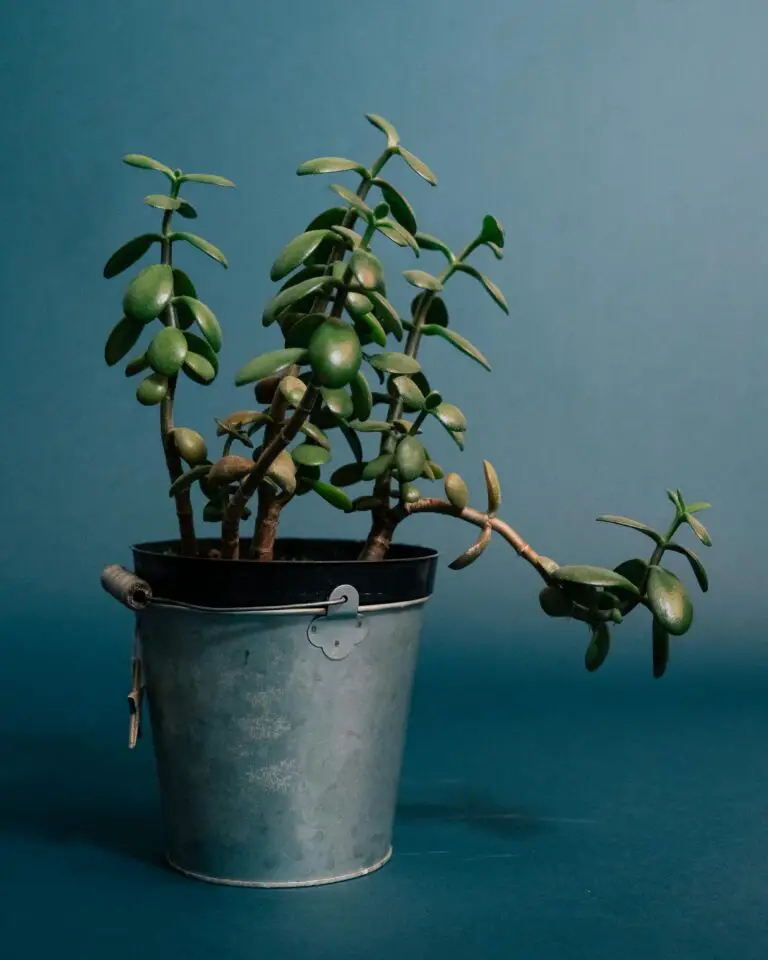
Let’s not overlook the captivating Crassula rupestris or ‘Baby’s Necklace’. Its rounded leaves, threaded along stems like beads, give it an almost ornamental feel. And it’s not just a pretty face; this species is as robust as they come, thriving in environments you’d never imagine a delicate chain could survive.
While Jade Plants are often praised for their ease of care and statuesque presence, the Crassula arborescens, also known as the ‘Silver Dollar Plant’, offers an equally impressive, yet delightfully distinct shimmering silvery sheen to its fleshy leaves that catch the light just so. It’s like having a living piece of art that grows more intricate with each passing year.
Identifying these botanical treasures doesn’t require an expedition into the wilderness—far from it. With a discerning eye and a hint of curiosity, you can turn your own home or garden into a treasure trove of succulent marvels. Each species, with its own idiosyncrasies and preferences, tells a different story, adding depth and intrigue to your growing plant anthology.
Caring for Your Crassula: Best Practices
So, you’ve pinpointed the perfect Crassula from the succulent crowd—kudos! But wait, the adventure doesn’t end there. It’s time to talk about TLC for your leafy friend. Let’s dive into the green-thumbed world of keeping your Crassula happy, shall we?
First up, sunbathing. Crassulas love a good tan, but not too much—think of them as sunbathers who can’t resist a sunny spot but also appreciate a bit of shade in the afternoon. Ideally, you’ll want to give them a spot that bathes in the morning sun and transitions to partial shade as the day gets hotter. Remember that sunburned succulent you saw last summer? Yep, that’s what we want to avoid.
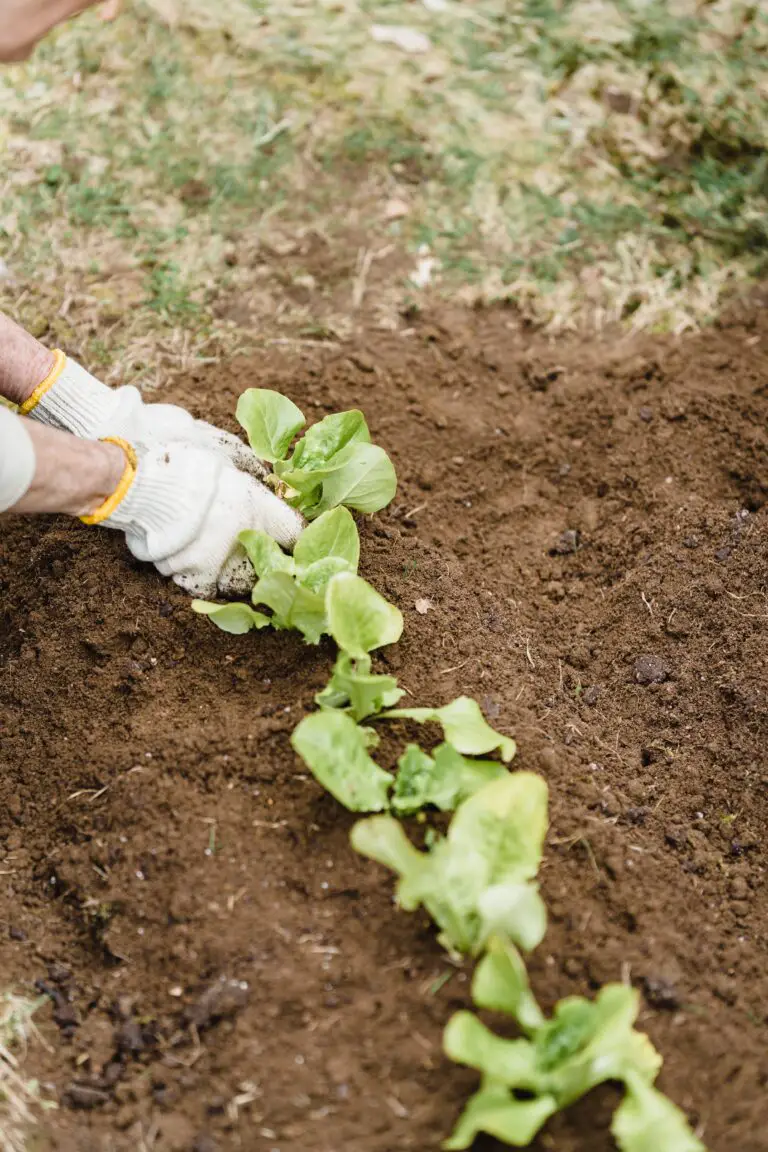
When it comes to hydration, think of Crassulas as camels of the plant world. They store water in those chubby leaves, allowing them to go longer without a drink. But they’re not into soggy feet—over-watering is a no-no. Wait for the soil to dry out before you water again, and you’ll be golden. Imagine having a plant that tells you when it’s thirsty by simply feeling the soil—how cool is that?
Last but certainly not least, the soil saga. Crassulas need a home that drains faster than a sink with brand-new pipes—that means a well-draining soil mix. Think about the last time you saw a succulent in the wild, perched high and dry—your Crassula is aiming for that vibe. Mixing regular potting soil with some sand or perlite will create the perfect, airy environment for your succulent’s roots.
There you have it, folks. A bit of sun, the right amount of water, and the perfect soil mix, and your crassula will be thriving like a green boss!
The Role of Proper Identification in Crassula Cultivation
Ever found yourself staring at a Crassula and wondering, “What variety are you, my green friend?” In the world of succulent cultivation, knowing the answer to that question is more than just satisfying curiosity—it’s crucial for the plant’s survival. Let’s dig into why nailing the right identification can mean thriving greenery versus a gardening flop.
Imagine you’ve just brought home a delightful Crassula from your local nursery. It’s not just any Crassula; it’s your Crassula. But here’s the catch: without understanding exactly what type it is, you’re taking shots in the dark with its care routine. Sunlight, water, soil composition—all hinge on the category that this succulent falls into. Get it wrong, and those luminous jade leaves might start sending out distress signals.
Take a real-life scenario – a gardener inherits a stunning collection of Crassulas of unknown varieties. Without identifying them correctly, some plants started withering despite careful attention. The culprit? A mix-up between the sun-loving Crassula ovata and its shade-prefering cousin. This is a classic example of an identification mishap leading to a horticultural headache!
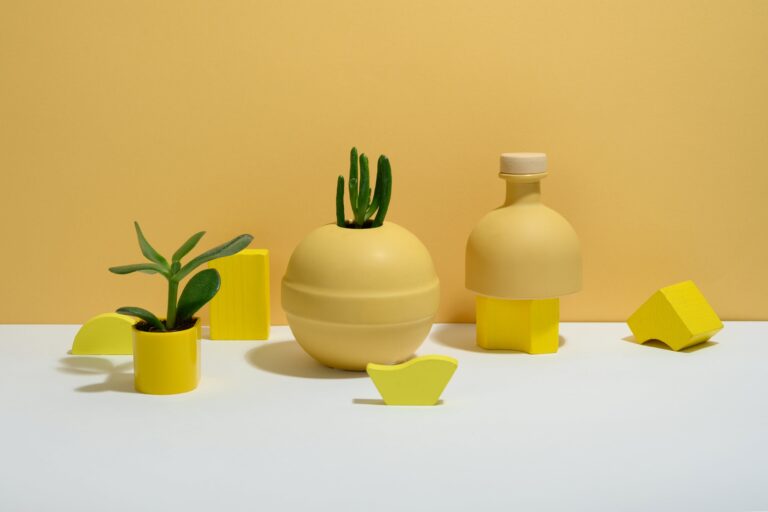
But it’s not just about keeping your Crassulas perky; it’s also about fending off the unseen. Pest and disease management often begins with understanding what you’re dealing with – a robust Crassula tetragona might resist pests that would decimate a more delicate Crassula moonglow. Knowing which is which can be the difference between a thriving sanctuary and an infestation nightmare. With the right ID, your green arsenal is prepared to defend against invaders that can often be specific to certain Crassula species.
So, let’s celebrate the art of identification! It’s not just academic; it’s a core aspect of responsible Crassula stewardship. After all, armed with knowledge and a keen eye, you can ensure that each of your succulent buddies lives its best, healthiest life. Go forth, intrepid gardeners, and decode those green mysteries for the lush oasis you’re dreaming of!
Leveraging Technology for Succulent Identification
Have you ever found yourself gazing at a stunning Crassula and wondering, “What’s this beauty called?” You’re not alone! Enthusiasts and botanists alike encounter this delightful dilemma. But fret not! The realm of technology has opened up revolutionary paths for crassula identification, making it a breeze for green-thumbed folks everywhere.

In the digital age, gardeners have swapped the old-fashioned field guides for sleek apps that can pinpoint a Crassula’s identity quicker than you can say ‘photosynthesis.’ Imagine taking a crisp snapshot of your leafy companion using your smartphone, and within moments, voilà – the mystery is unraveled. That’s right, no more guesswork or poring over plant encyclopedias.
Real-life examples abound. Take Jane, a succulent lover from California. She used a plant recognition app during her desert hike and discovered she had stumbled upon a rare Crassula variety, previously unknown to her. And then there’s Pedro, a botanist in Brazil, who employs image analysis software to study and catalog Crassula specimens in the wild, helping preserve biodiversity.
The bridge between flora and technology is ever-strengthening. Sophisticated algorithms analyze leaf patterns, growth forms, and even minute details like the serration of edges. It’s how fellow plant enthusiasts cross borders without stepping out of their living rooms, sharing their Crassula finds, and building a global community.
The exploration of these tools and applications is not just about the thrill of naming a succulent. It’s about connecting deeply with nature through the cutting-edge screen of modern technology. So, the next time you’re out in your garden or on an adventure, let digital botany enhance your green journey and unlock the full potential of Crassula diversity.
Frequently Asked Questions
Got a burning question about your Crassula buddy? Chances are, you’re not alone! Dive into our treasure trove of Crassula knowledge where we tackle your most common conundrums with some juicy, green-thumbed wisdom.
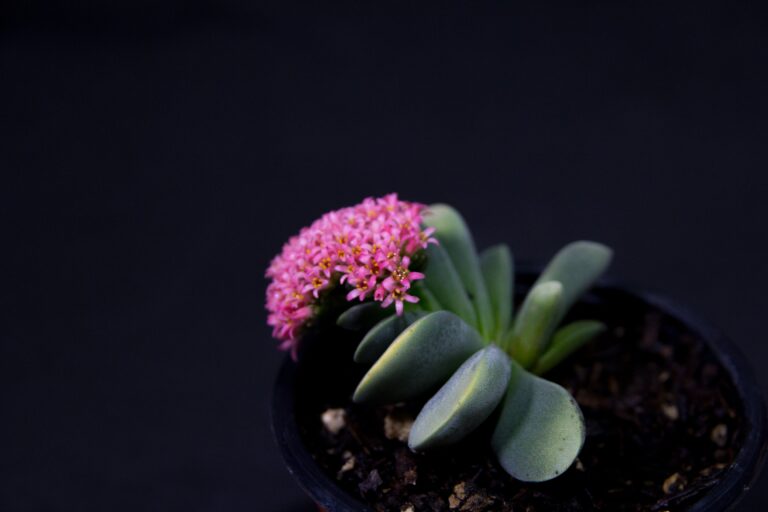
What’s the Trick to Telling Crassula Varieties Apart?
If Sherlock Holmes had a garden, Crassulas would be his favorite mystery. Each variety flaunts distinctive features—like leaf size, shape, and texture. Take the Crassula ovata (Jade Plant)—thick, shiny leaves are its claim to fame. Or consider the Crassula perforata (String of Buttons), with its unique stacked leaves. It’s all about observing these little clues!
Are Crassulas Fussy About Where They Grow?
Like a good guest, Crassulas aren’t demanding. These succulents flourish with a bit of sunshine and well-draining soil. They’re the ultimate ‘set-and-forget’ plants that reward even the most distracted plant parents with their unwavering leafy love.
My Crassula’s Looking a Bit Pale – What Gives?
Sometimes, Crassulas play chameleons and change color to reflect their mood—or more accurately, their health. If your green amigo turns a tad pale, it’s probably craving more light. Picture a sunbather turning from pale to tan; your Crassula’s doing the plant version of that!
How Much Chit-Chat Does My Crassula Need?
You might have heard tales of avid gardeners whispering sweet nothings to their plants. While Crassulas don’t need bedtime stories, a little chat might just be the pep talk they need to grow. Just don’t expect a verbal response, unless you’ve got a particularly magical garden!
Can I Share Cuttings with Friends?
Definitely! Crassulas are like that recipe your grandma swears by—made to be passed down. A cutting here, a leaf there, and voila! You’re spreading succulent love. Just snip a healthy bit, let it callous over, and plant—it’s that simple.
Remember, the world of Crassula identification is vast and delightful—a leafy labyrinth waiting to be explored. Keep these answers as your compass, and you’ll be a Crassula connoisseur in no time!
